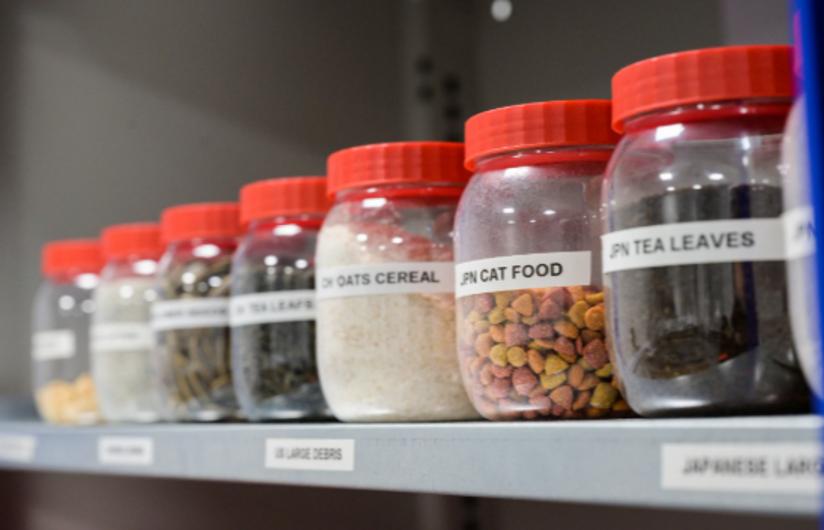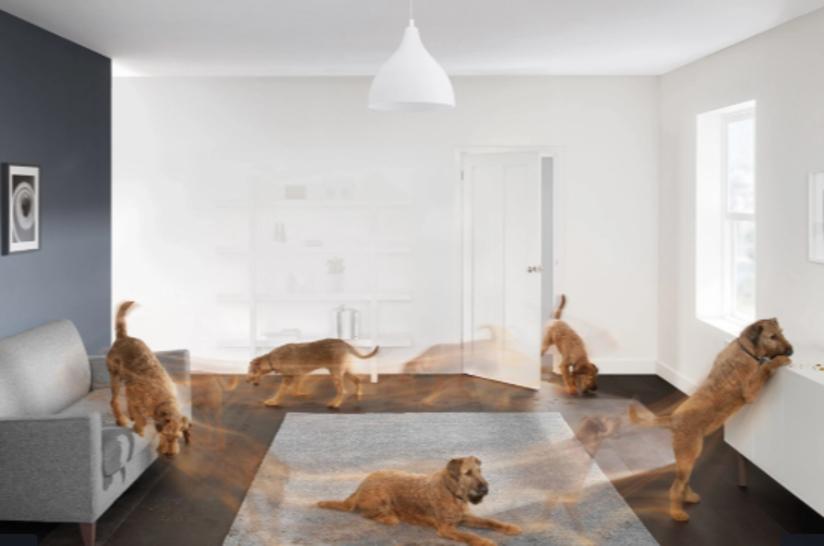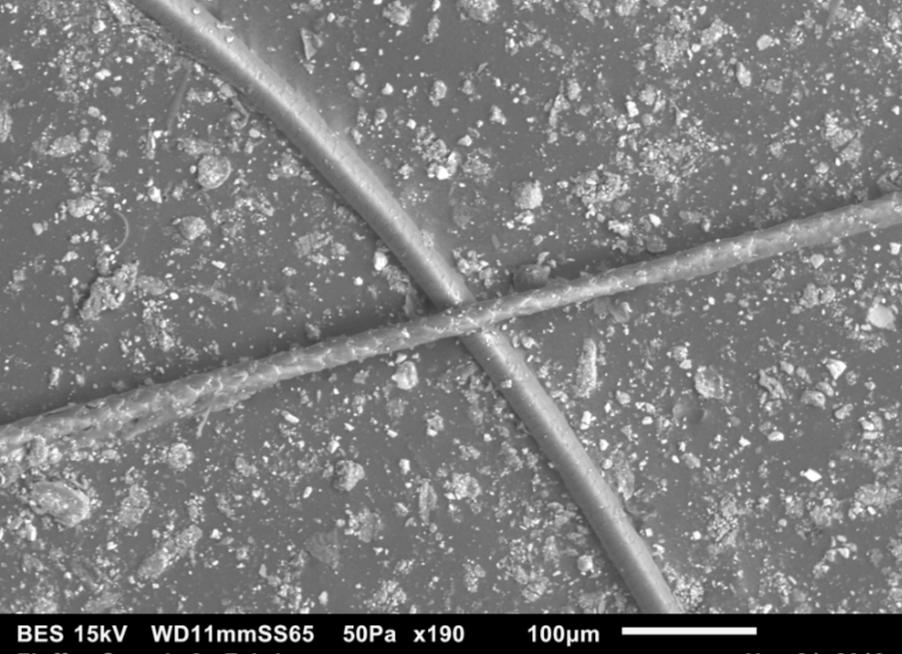Creature comfort: Dyson engineers reveal the best cleaning regime for pets
Dyson Engineers are obsessed with making machines that clean better, especially when it comes to pets and healthy homes. Here, James McCrea, Senior Mechanical Engineer at reveals his top tips and cleaning regime for pet owners.
10 July 2020
-

-
For many pet owners, the frustration of constantly clearing up hair is an everyday problem, particularly as we spend more time indoors. But spotting the hair is half the battle. Beyond the locks left behind is a world of microscopic mess consisting of skin, hair and dirt. Here's how to deal with it.
“Pet hair shares many similarities with human hair,” says James McCrea, Senior Mechanical Engineer at Dyson. "They are both structured in the same way and they tend to have a similar thickness. But there are some key differences that make pet hair particularly difficult to clean.”
-
Human hair grows continuously, growing longer and thicker in the process (the anagen phase), which can last between two to seven years. The hair follicle will eventually reach the catagen phase when it stops growing. But animal hair stops growing as soon as it reaches a certain length and sheds to be replaced by new hair. This can change between the seasons, with certain dog breeds, like German Shepherds, Collies and Samoyeds shedding more hair in the spring and autumn to make way for their summer pelts. That's why you find more pet hair at certain times of the year.
Frequently, pet hair embeds into carpeted surfaces or electrostatically “sticks” to a hard floors. To ensure the hair is picked up, agitation is required to “peel” it off of the surface, which is done by either the airflow from the machine ("passive") or the brush bar’s nylon bristles, a form of "active" agitation.
-
“When we design vacuum cleaners, we test with dust from real homes and not just industry standard material, because we know that organic matter like pet hair and dander is often caught up in household dust and will have a big impact on how the machine functions,” explains James.
“In the development of our vacuums, we go to extraordinary lengths to make sure that our technology will work effectively for our owners. In our Pick-Up Laboratory, we test how effective our machines are at removing pet hair from different floor types – from industry standard carpets, all the way to tatami matting commonly found in Japan.”
-

-
From investing in all types of flooring to bringing in different types of hair, dirt and even pet food from all over the world, we aim to recreate the conditions in real homes each day to figure out the best solutions. “A home with pets not only contains pet hair, but also a whole host of pet-related mess,” says James.
“As a dog owner, I know from experience that pets can cause quite a bit of chaos around the home!” In the Dyson Pick-Up Laboratory, we take all of this into account and have done our research. Our engineers collect dry pet food from around the globe to test out Dyson vacuums’ suction power and better understand how our technology can be optimised for pet owners. “We want to make sure that our vacuums will work effectively in real homes, wherever they are in the world,” explains James.
Beyond the pet hair and food you can see, there is a host of microscopic life that pets bring in with them that’s invisible to the naked eye. Pet dander is just one of those things. Composed of tiny, microscopic, skin particles shed by pets with fur or feathers. It can be shed onto surfaces or transported through the air in household dust[1].
-


Once airborne, dander and the dust mites that live on it can be inhaled, triggering allergies. As well as dust mites and skin flakes, dried saliva, urine or faeces containing allergens may flake off from an animal's fur and become airborne, where it can be ingested. Much like dust, dander builds up in soft furnishings such as carpets, mattresses and pillows and is the food source of dust mites.
“If pet hair is a problem for you, vacuuming your floors and soft furnishings regularly and not allowing dust, pet hair and dander to accumulate is essential,” explains James.
“It’s worth investing in a vacuum with extra strong suction power and a fully-sealed filtration system as our research shows that the best way to get rid of pet hair and dander is to remove it from your home completely. That’s why we spend a lot of time developing our filters and seals at Dyson, to make sure that we capture not only the pet hair you can see, but also the dander you can’t.”
Dyson Engineers' top tips for pet hair cleaning at home:
1. Groom the source of the problem.
Pets shed fur all the time as their hair reaches the catagen phase – the stage in a hair’s life cycle stops growing. They shed much more regularly than humans, so grooming your pet frequently will avoid hair being deposited in your home. Groom your pet in the same area and spot clean this with slow vacuuming using a Mini-Motorised tool, designed with nylon bristles to remove embedded pet hair and dander.
2. Clean from top to bottom.
Like dust, pet hair and dander can become airborne when disturbed and fall onto lower surfaces, so start cleaning up high and finish on your floors. Don’t miss out armcharis and sofa, especially if you pets spend time there. Soft furnishings can hold pet hair as well as pet dander, dust mites and other allergens. A Mini-Motorised tool is great for furniture you can’t put in the wash.
3. Wash pet blankets and remove covers.
Washing blankets, cushions and bedding – wherever your pets spend the most time! – at 60 degrees celcius will help to break down allergens and reduce the amount of microscopic dander that dust mites feed on. At the end of the wash, make sure you remove any pet hair out of the drum.
4. Vacuum slowly.
Vacuuming slowly gives the airflow and brush bar more time to “agitate” the pet hair and remove it from the surface.
5. “Peel” pet hair from surfaces.
Some vacuums are engineered with nylon and carbon fibre bristles at their cleaner head to disturb the hair and “peel” it off the surface. Using a cleaner head with a lint picker strip will stick the pet hair to it – a lint roller can do the job in some cases, but it won’t be able to remove the pet dander that causes allergies.
6. Vacuum little and often.
Pet hair is more likely to clump on carpets or form tumbleweed on hard floor surfaces than human hair. Vacuuming little and often prevents excessive build-up of pet hair. If you’re tight on time, using a robot cleaner to remove pet hair while you’re out will keep pet hair under control between more thorough cleans.
7. Vacuum in different directions.
Go over the carpet a few times in alternating directions to pick up more pet hair and agitate some of those embedded ones loose. But don’t forget, any more than two or three times gives minimal increase according to our research.
Press contacts
-
Liv Thomas
-





